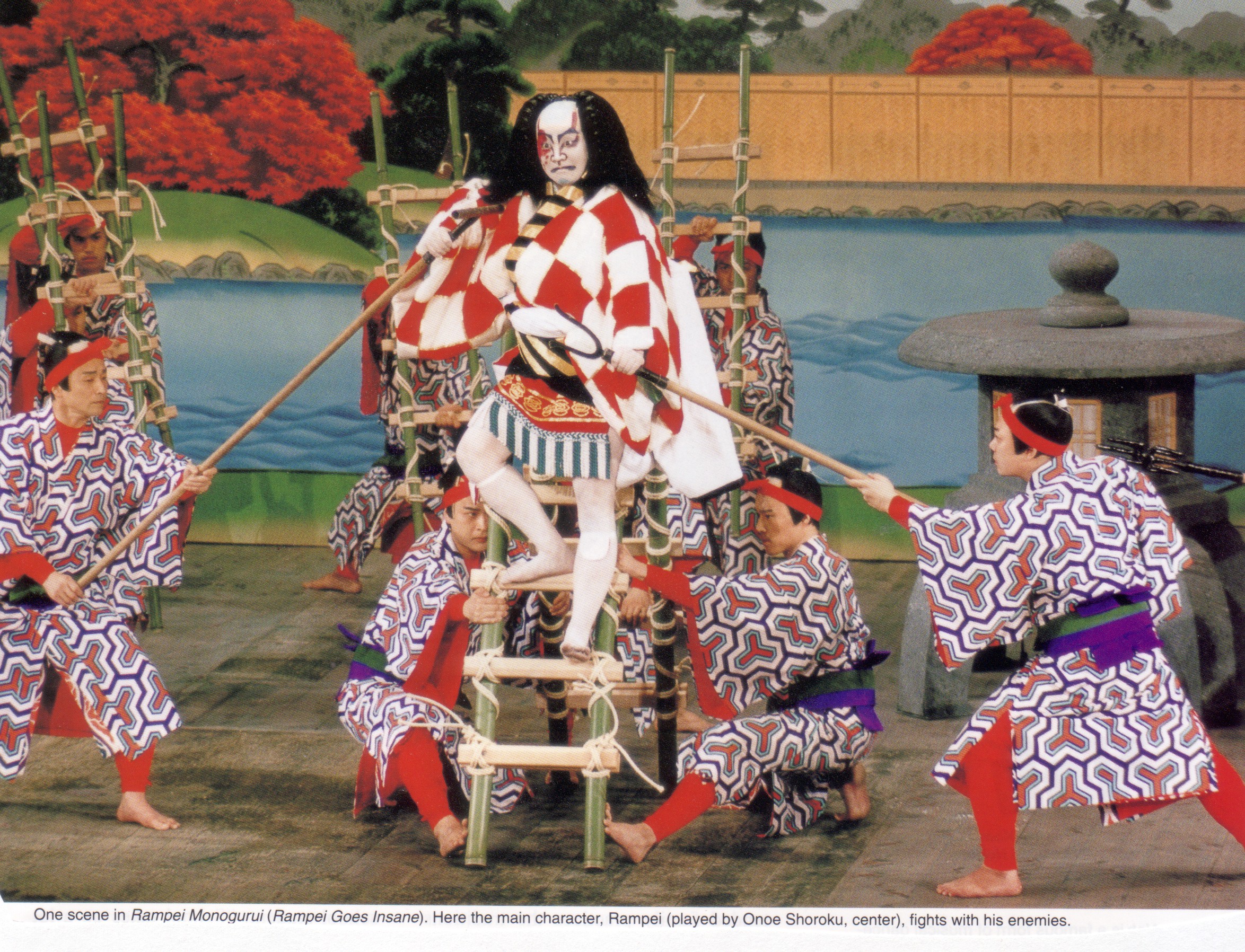
TARGET 070815
Kabuki

The one thing that most westerners know about Kabuki is that all the actors (and actresses) are male. Few people know, however, that Kabuki theatre was created by a woman, a shrine attendant named Okuni, in the 17th century. This was during the Edo period. (Edo was the former name of Tokyo). Originally both men and women acted in the plays. However the Tokugawa Shogunate forbade women to act in Kabuki theater and it became tradition. This tradition still holds today. Kabuki theater is attributed to the culture of the townspeople, and not that of the higher classes.
As you can see from the top photo, the play will often employ stage hands who are supposed to be invisible or unnoticed by the audience. Many times, these are dressed to blend in with the background, and at other times, they are dressed to appear as simply part of the cast. A brief video clip is provided to show the general layout of the stage and audience. Note the presence of the musicians in the background, right on stage with the actors.
For short exerpts of Bando Tamasaburo, famous kabuki dancer, performing "Sagi Musume", click here.
and, for a much fuller video of the performance, complete with commentary, click here.
And, for a rather interesting video of Japanese robots (real robots) performing Kabuki, click here.
FEEDBACK MAP
